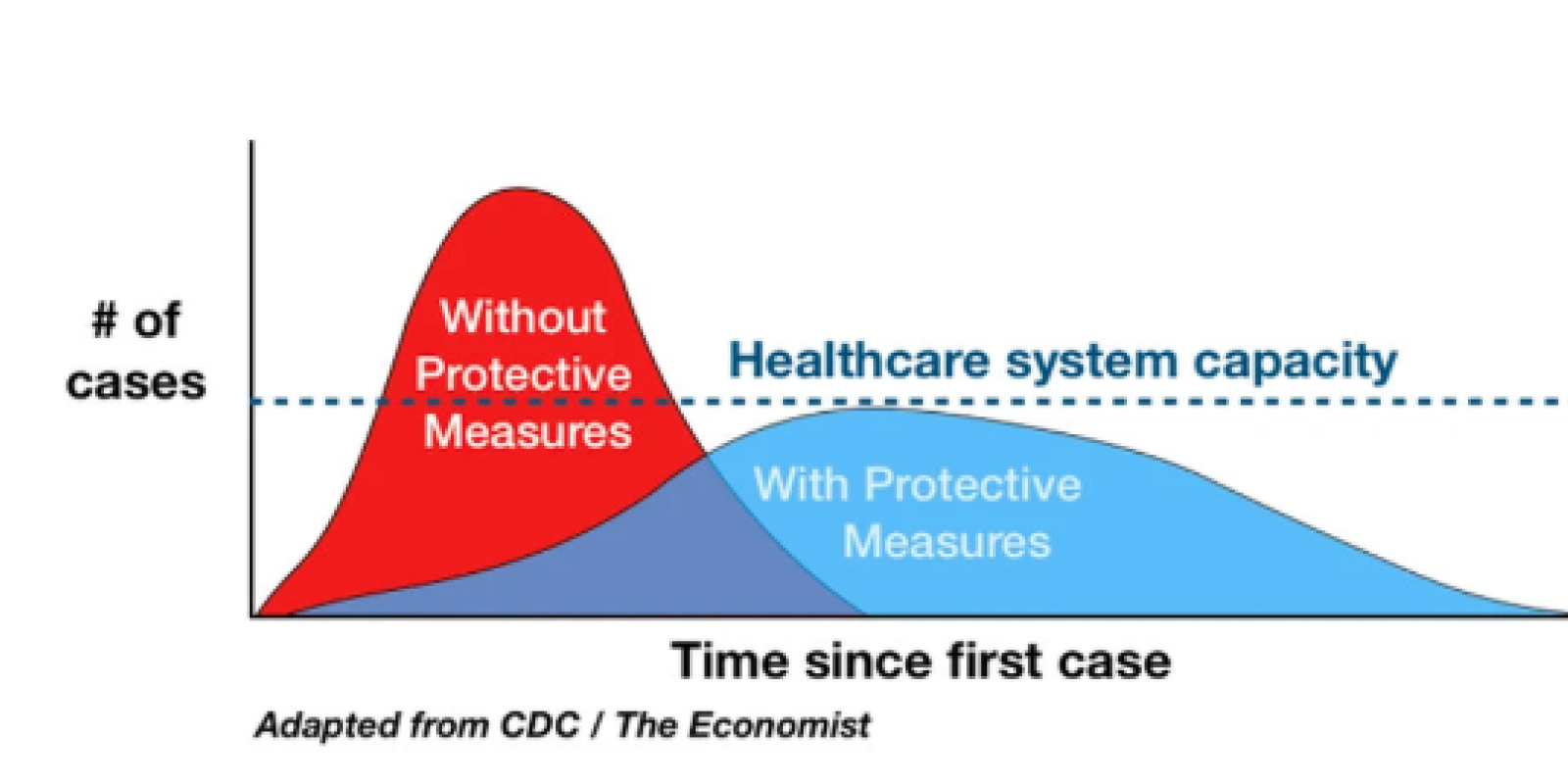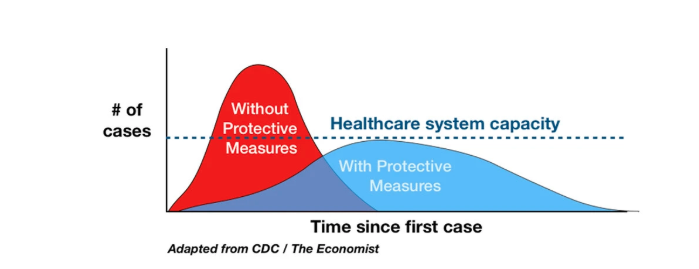
'Flatten the Curve' - How Social Distancing Can Help Slow Down COVID-19
The spread of COVID-19 (coronavirus) has been mapped out as an exponential curve, an image that has experts worried about containing the spread of the virus. The Centers for Disease Control and Prevention says that one of the best ways to slow down the spread — or flatten the curve — is to practice social distancing.

The CDC defines social distancing as "remaining out of congregrate settings, avoiding mass gatherings and maintaining distance (approximately 6 feet or 2 meters) from others when possible." Over the past few weeks, public health professionals have encouraged people to stay home as often as they can, ditch parties, events and other social activities and limit close, face-to-face contact with other people. The logic is to limit the opportunities for the virus to spread and avoid a potential healthcare disaster: a spike in the number of people infected and not enough medical resources to take care of them all at once.
In an effort to implement this strategy, the Egyptian government has called for a cancellation of large public gatherings, canceled face-to-face classes for all schools and universities for two weeks and on Monday announced that it is shutting down its airports and air travel starting from Thursday at noon until March 31.
But social distancing can't rely solely on governmental efforts to keep people away from each other. It is up to individuals to take on the task of helping to flatten the curve. This means staying home if you're sick, except to seek medical care, and avoiding direct contact with other people: not shaking hands, hugging or kissing, avoiding crowded areas and keeping a distance when interacting with people, washing your hands and covering your coughs and sneezes.
And it's important to note, social distancing doesn't depend on a total disruption of your life, but a tweak to your day-to-day activities that can go as far as saving lives. You can find CDC guidelines on how to protect yourself and others here.
